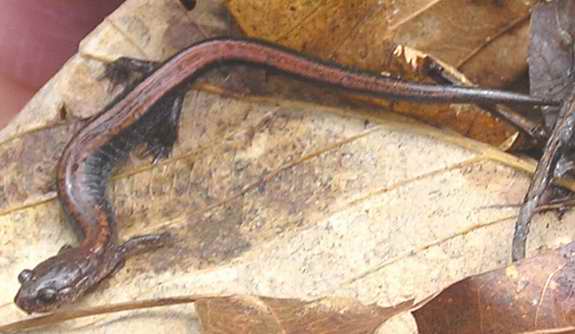|
Common Name: Red-backed Salamander Scientific Name: Plethodon cinerus The Red-backed Salamander is characterized by a red stripe extending down the back to the tail, a long and slender body, and protruding eyes. Though it is normally nocturnal, living under the leaf cover during the day, it can be found on the surface on warm days in late winter and early spring. Potpourri: The Red-Backed Salamander is lungless, having evolved to breathe through its skin and membranes in its mouth and throat. The adaptation is believed to have evolved as stream-dwelling salamanders needed reduced buoyancy to keep from being washed downstream by the currents. Salamanders are quite plentiful. One study found that their biomass exceeded that of small mammals and was double that of birds during the peak breeding season. Red-backed Salamanders made up about 94 per cent of the total salamander biomass. The reason for this is that they have evolved to tolerate the cold better than other salamanders. Red-backed Salamanders are terrestrial. The female lays 6-12 eggs in a grape-like cluster under a stone or in a rotten log, staying curled around them for protection for two months. The name salamander means "lives in fire" and derives from a mythological reptile in Persian lore that was said to live in fire. It is generally used for any of various devices used in fire and able to resist heat, such as pokers and portable ovens. |
